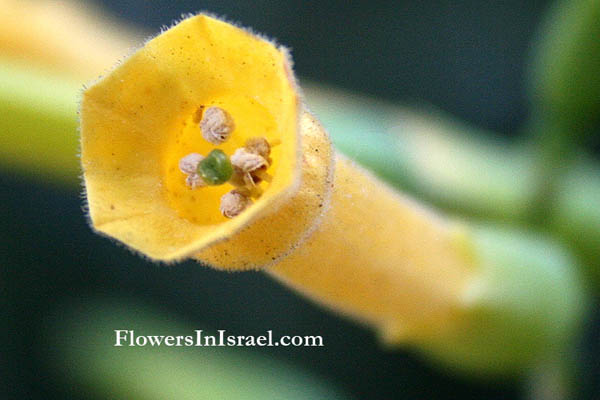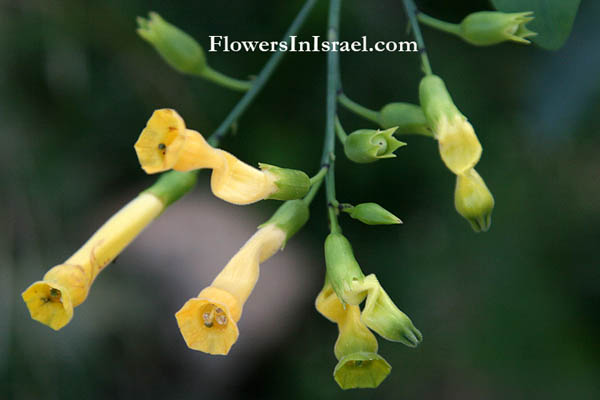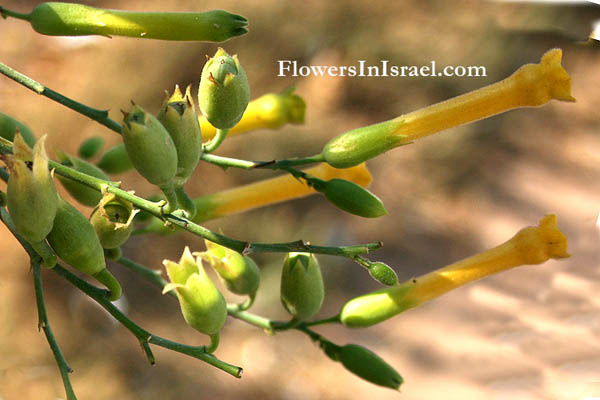Hebrew: טבק השיח, Arabic: تمباك بري
| Scientific name: | Nicotiana glauca Graham | |
| Common name: | Tree Tobacco | |
| Hebrew name: | טבק השיח | |
| Arabic name: | تمباك بري | |
| Family: | Solanaceae, סולניים |

|
| Life form: | Tree | |
| Stems: | 2-4m | |
| Leaves: | Alternate, glabrous, glaucous; elliptical to lanceolate, acute | |
| Inflorescence: | Lax panicle | |
| Flowers: | Calyx tubular, teeth triagular, acute, equal; corolla 30-40mm, tubular, yellow; limb 2-4mm with short lobes | |
| Fruits / pods: | Capsule | |
| Flowering Period: | May, June, July, August, September | |
| Habitat: | Disturbed habitats | |
| Distribution: | Mediterranean Woodlands and Shrublands, Semi-steppe shrublands, Shrub-steppes, Deserts and extreme deserts | |
| Chorotype: | Plurireginalbor-trop | |
| Summer shedding: | Perennating |

Derivation of the botanical name: Nicotiana, named after Jean Nicot (1530-1600), a French diplomat, who is said to have introduced tobacco to Europe. He introduced snuff (powdered tobacco that is sniffed up the nostril) to the French court. glauca Greek, glaucus, γλαυκοϛ, bright, sparkling, gleaming; grayish, bluish-green (for plants, a white bloom on a leaf giving a gray-green appearance), referring to the powdery coating on this plant. The Hebrew name:טבק, tabac, tobacco; Spanish: tabaco, from Taino (Caribbean) tabaco (= pipe for smoking, roll of tobacco leaves).
Nicotiana glauca is being studied to be used as a treatment for nicotine addiction since it does not contain nicotine, but analog alcaloides (anabasine [insecticide]). It has tubular yellow flowers that appear between April and October. The nectar of the Nicotiana generates high levels of hydrogen peroxide, which protect flower parts from fungal infection. The flowers attract the Palestine sunbirds (Nectarinia Osea), important nectar consumers and pollinators of the Nicotiana glauca. 
|